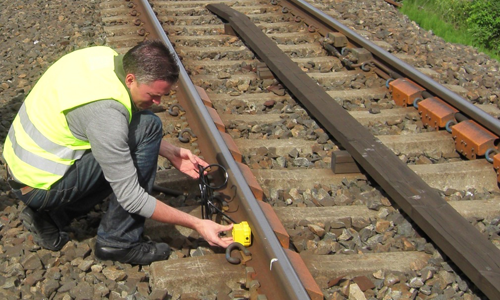High-tech train warning system to save lives, reduce material losses

Train accidents at level crossings carry a high cost in the form of death, injury and material damages. A Norwegian warning system has been designed to lower the risk of such accidents.
Every week, somewhere in the world, a serious accident occurs at a rail level crossing. Many of these crossings are not equipped with safety measures. A warning system could prevent numerous accidents and save many lives.
These accidents cause enormous material damage and loss of resources, since the train traffic involved is delayed greatly whenever an accident occurs.
Detects sound waves
The Norwegian research-based company WaveTrain Systems is now going worldwide with its technologically innovative solution for securing crossings.
Using advanced sensors placed at crossings, the company's warning system is safer, simpler and far less costly than conventional methods. The sensors detect the unique frequencies of an oncoming train through the rails, triggering light and sound warnings to alert anyone near the crossing.
The idea was hatched by a group of scientists at the research foundation Norwegian Seismic Array (NORSAR) at the request of the Norwegian National Rail Administration.
"We liken WaveTrain Systems to the native American practice of putting one's ear to the ground," says NORSAR Chairman of the Board Anders Dahle. "Our system is literally on the track, listening for trains."
From individual thinking to market-ready products
NORSAR generally carries out its work through five-year periods of strategic and commercialisation planning. The formula has led to some significant successes, including WaveTrain Systems.
"Researchers at NORSAR are very inspired when they see a research idea turned into a major commercial success out in the world," continues Mr Dahle. "They see that their ideas can pay off and provide a more secure future for our institute, while it also feels good for us to do things that contribute to society."
"In the academic knowledge pool there is lots of individual thinking going on," says Mr Dahle. "Researchers do their research and publish it – much of the time in their own interest – but publication remains the end result of their work. From a societal perspective, however, many of these ideas ought to be developed for the market. It only makes sense, considering how much of society's money goes towards funding research."
Needed help with commercialisation
After the researchers themselves had tested their safety system for rail level crossings, they presented their idea in 2008 to the technology transfer office Kjeller Innovation (KI). In 2009, NORSAR and KI formed the company WaveTrain Systems, which is now owned by the venture fund Norsk Innovasjonskapital – of which KI is a major owner – so the technology transfer office (TTO) still plays a guiding role.
The revenues ticking in for KI enable CEO Mariann Ødegård and her colleagues to invest in even more research-based companies.
"Usually it takes a long time to commercialise research-based ideas," she explains. "But in the case of WaveTrain Systems, there was a very clear market need and the solution was far more cost-effective than other systems. We saw the potential very early on and brought in professional investors – which is a major ingredient in the recipe for success."
Basic allocations from the Research Council
KI is one of eight Norwegian TTOs cooperating with the Research Council of Norway's Programme for Commercialising R&D Results (FORNY2020).
"Without the basic allocations under the FORNY2020 programme, we would not have been able to continue working on this idea from NORSAR," asserts Ms Ødegård. "This type of funding from the Research Council helps to give good ideas a chance to benefit society instead of ending up on a researcher's shelf."
Marketing worldwide
WaveTrain Systems quickly won a contract with the Norwegian National Rail Administration, and in 2012 won two more contracts with perhaps the most prominent of all railway infrastructure authorities, the UK's Network Rail. The systems have also been installed on some tracks in Finland, and this autumn WaveTrain Systems has been talking with German, South African and Australian contacts.
"The whole world is our target market – and the market is enormous," says WaveTrain Systems CEO Richard Aarøe. "None of our competitors can offer the kind of solution we have developed. We have, of course, patented the concept."
He is pleased that their warning system is "running smoothly", though it is no easy task for a small enterprise to market a new product.
"The large international railways are accustomed to working with large companies with plenty of resources and lobbyists," says Mr Aarøe. "So for a small company like ours, it's not easy to get their attention. But we come a long way by believing in ourselves and daring to make our presence known."
Provided by The Research Council of Norway

















